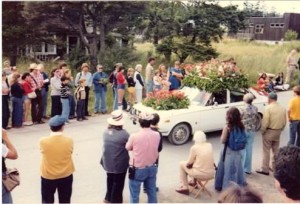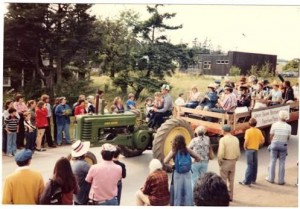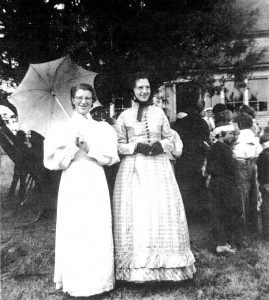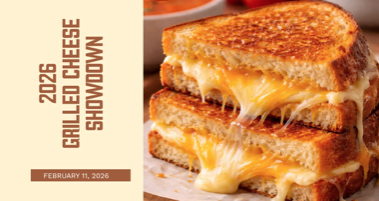By Tom Welch
Our tradition of historical parades on Orcas Island began in the early 1950’s when the newly-organized Orcas Island Historical Society organized the first parade in 1952. Intended to stimulate interest in the history of Orcas Island in general, and the Historical Society and Museum in particular, early parades were long on horse-drawn farming equipment and short on cars and trucks.
When these first parades were organized, many sons and daughters of our early pioneer settlers were still alive and active in the community. They expected to see exhibits and activities that reminded them of their early years. Draft horses, teams pulling wagons and buggies, a horse-drawn threshing machine from a Crow Valley farm, an old doctor’s buggy: all spoke volumes to parade watchers of life on Orcas Island in the days when agriculture was the predominant industry.
The community embraced the annual Historical Days parades wholeheartedly, with social and fraternal organizations such as the Oddfellows, Stitch and Gossip, The Madrona Club, Rebekah Lodge, and others walking, riding in cars or trucks or on floats of their own making. The Grange floats spoke to farming and the value of agriculture, and the Orkie Square Dancers recalled early life on the island when dances were often the only social venue available to island families.
In early Historical Days parades community members wearing period costumes were a popular attraction, as seen in this photograph of Jane Willis Barfoot and her daughter, Irene. Preparing to walk in the 1955 parade, Jane is wearing a dress made by her great-aunt, who was bridesmaid at Jane’s grandmother’s wedding in 1868, while Irene has on a dress her grandmother, Emma Culver, wore while teaching school at Newhall sometime before 1903.
Arlo Woodward was a familiar figure who made elaborate floats and played his own musical compositions on an organ while riding in the parade each year. Mary Leckrone worked tirelessly to coordinate the 1976 parade, coming up with fifty entries celebrating our nations’ bicentennial year. Dorothy Morrill was another volunteer who labored mightily to stimulate interest in the parades and the Historical Society, joining the Halls, Harrisons, and Langells in the first rank of those renowned for their interest in island history.

Trucks bedecked with flowers lined up in Historical Days parades in the past. (Check out the old cell phone in the back pocket of the blue jeans)
The Historical Days parades, as they progressed annually through the 1950’s, also reflected the vagaries of a small museum membership and an unpredictable local print media. News articles noted that the first parade in 1952 was a big success, the second annual parade equally so in 1953, and the third in 1954 proudly continued this popular new tradition. The 1955 parade was the best yet, with more than a thousand spectators, and was accurately described as the fourth annual Historical Days parade. So far,so good.
Things began to go wrong with the parade count in 1957, with references to the 7th annual parade that July. This remarkable tumble down the counting slope wasn’t helped the following year, when they referred to the 5th annual parade coming up soon. In 1959 it was the 9th annual Historical Days Parade, and in both 1960 and 1961 it became, somehow, the 10th annual parade. Both years. It was at about this point that everyone stopped counting annual parades for a while, no doubt out of sheer exhaustion.
Our Historical Days parades have always been popular events, great excuses for everyone to come to Eastsound and visit old friends and neighbors, and occasionally have a good laugh, too. One year, in the late 1970’s, there were so few parade entries that they went around the parade route twice, to the delight of entrants and spectators alike. Another year saw the band tumble around atop a flatbed trailer, instruments flying, as the driver took the corner a bit too fast. We don’t always know what we’ll see at the parade each year, but very few islanders willingly miss it.
The parades became more organized as the Historical Society grew and more volunteers got involved, but it eventually became difficult for the board and members to muster up the energy and resources for the annual parade. When the Chamber of Commerce took over management of the parade in recent years, it was a boon to the members of the Historical Society board. Now they concentrate their energies on insuring that the Historical Days Fair remains a popular annual event.
**If you are reading theOrcasonian for free, thank your fellow islanders. If you would like to support theOrcasonian CLICK HERE to set your modestly-priced, voluntary subscription. Otherwise, no worries; we’re happy to share with you.**










I will bet that is Rich Madan (He still has that hat) with a Fire Department walkie-talkie, not as cell phone, in his back pocket!